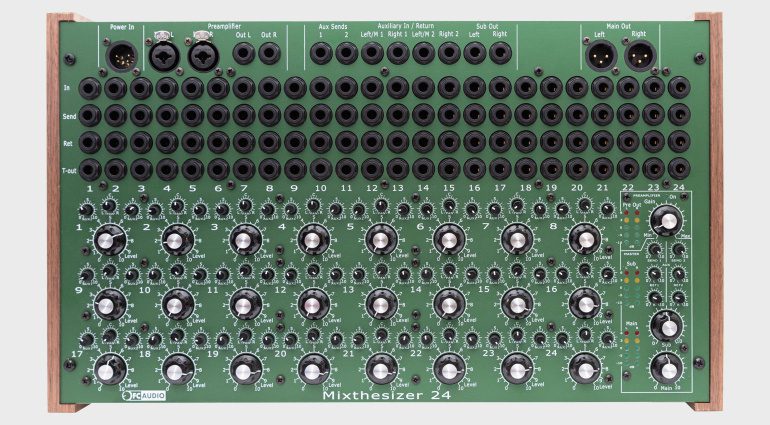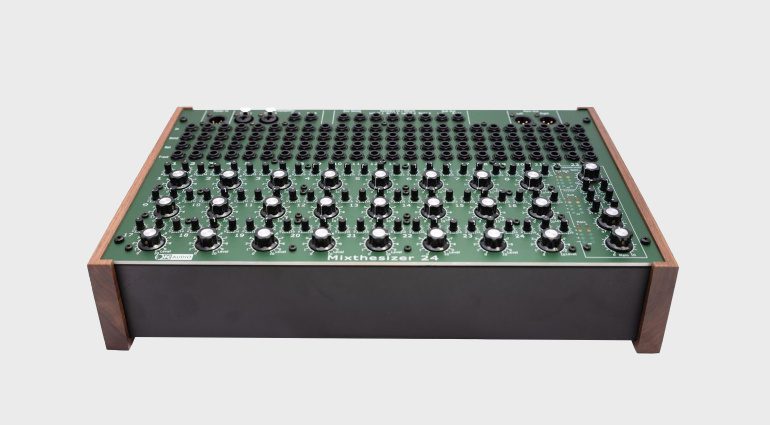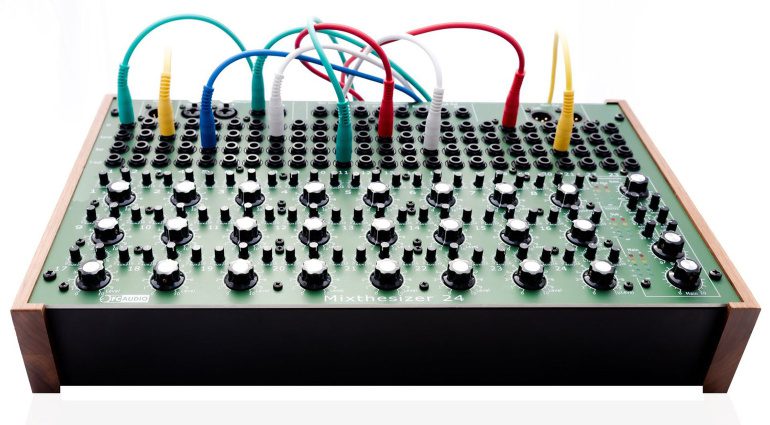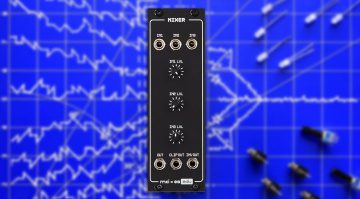SynthFest France: FCPro Audio Mixthesizer – mixer for synths
A mixer for synthesizers? About time! FCPro Audio has revealed the stunning Mixthesizer for mixing your array of hardware synths that’s customisable to meet your needs.
Mixthesizer
That’s a name that doesn’t quite roll off the tongue but it’ll do and is plenty apt enough for the purpose. Mixthesizer is a fully customisable studio quality mixer dedicated to the mixing of synthesizers. It’s moved away from the traditional channel strip setup that tends to make mixers overly chunky and has given over the space to an array of more familiar synth-style knobs. I think it looks great!
FCPro Audio want to make it as customisable and upgradable as possible. To begin with you can configure it with anything from 2 to 64 channels, in mono or stereo. And then you can also set up the auxiliary system for up to 8 sends and returns and in the model they were showing each channel has an insert point and a direct out. For inputs and outputs, it’s up to you whether you would like regular jacks, minijacks, XLR or DB25 connections. Along the top is a pre-amp section designed for providing the best possible connection between an individual synthesizer and your DAW’s audio interface. On the right is a master section with metering.
Each channel gets a main level knob and a couple of smaller knobs that deal with panning and auxiliary sends. There don’t appear to be any mute or solo switches that I can see which is perhaps the one thing I would miss from a regular mixer.
Mixer configurator
The idea is that there will be a configurator on the FCPro Audio website where you build yourself your personalised Mixthesizer. You choose your channel count, auxs, connection configuration, numbers of mono and stereo channels, stereo groups, number of outputs, sub-outs and maybe front panel colour and then FCPro Audio will build it for you.
The Mixthesizer seen here is a 24 channel, full quality studio mixer. You can see it takes up a fraction of the space of a regular 24 channel mixer. It’s going to be interesting to see how practical the different configurations will be. The 24 channel one on display would apparently cost around €2,000. FCPro Audio also say that if you start with something small they will happily take it back in and upgrade it to a larger Mixthesizer at a later date.
The configuration should go live in a couple of weeks. Once it is online you’ll find the build time on a Mixthesizer would be 4-5 weeks. I think this looks like a fabulous and premium machine that definitely offers a workable alternative to regular mixers. It will be interesting to see what smaller configurations look like.
You are currently viewing a placeholder content from Youtube. To access the actual content, click the button below. Please note that doing so will share data with third-party providers.
- FCPro Audio Mixthesizer: FCPro Audio
- FCPro Audio Mixthesizer: FCPro Audio
13 responses to “SynthFest France: FCPro Audio Mixthesizer – mixer for synths”

















Starting to lose interest in hardware synths lately. They seem to be either less than 100$ for something microscopic or well into the 4-digits price range.
without solo/mute and eq’s, is this not just more versatile patchbay?
i’d love to get something like this but it needs to be half as big, twice as functional for my setup. i don’t need that many inputs
Nice idea but still pricey. I tend to use Behringer RX1602’s which are about 100 quid each and let you put 8 mono / 4 stereo synths into each them. 1U x 19”. Panning and mute on each channel too 👍
Is there any special reason to get this over regular mixer? Horrible interface and it does not even has mute and solo!
A lot more inputs served in a more compact footprint than a regular mixer (which ‘waste space’ with faders, EQ pots, unnecessary XLR ports etc).
i don’t think this is “horrible”, but also i disagree that eq pots and faders are wasted space.
For certain purposes they are. There are approx 17 million mixers with those things. I’m interested in this because it doesn’t have those and so I save space and cost, allowing more room for send & returns for example
But if space is your thing than why go for a mixer with all the i/o on the top? With all connectivity on the back it would’ve been a lot smaller.
Can’t you just buy a few rack mixers together with a patchbay? It’s a fraction of a cost and works like a charm.
No faders, no EQ, no mute/solo. Basics of any mixer. Form factor isn’t small. If you want to know a starting point from an innovation perspective, see 1010’s bluebox.
It’s analogue though and is being compared to big Mackie style 8-bus 24 channel desks. With faders it would be much bigger, same with the EQ which is larger irrelevant with a synth.
Customizability is great (esp. the number of aux sends, and returns?), direct outs are great. But absolutely agree with mutes and solos. Pre-/post-fader options for direct outs and auxes would be amazing as well.
Why not have cv controls for fx send, volume etc? That would be a proper synth mixer.
You are currently viewing a placeholder content from Facebook. To access the actual content, click the button below. Please note that doing so will share data with third-party providers.
More InformationYou are currently viewing a placeholder content from Instagram. To access the actual content, click the button below. Please note that doing so will share data with third-party providers.
More InformationYou are currently viewing a placeholder content from X. To access the actual content, click the button below. Please note that doing so will share data with third-party providers.
More Information